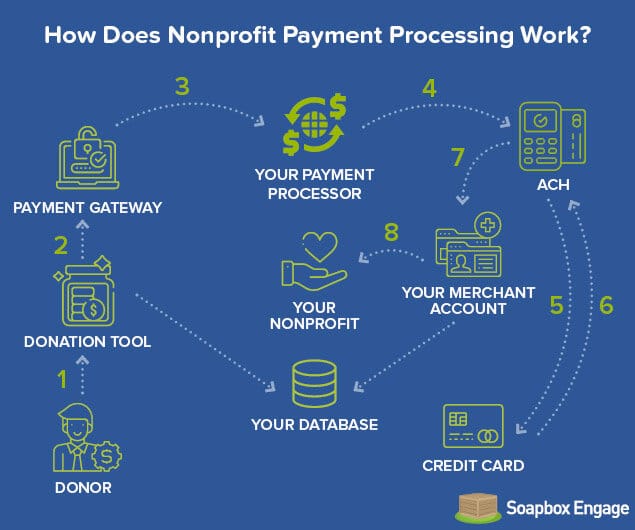
The increasingly digital nature of nonprofit marketing and outreach makes it nearly impossible to avoid website development. As a nonprofit leader, you’re likely following web design best practices to ensure you maintain a site that fulfills its necessary purposes.
However, basic website standards are no longer enough to capture and keep the attention of your site visitors. Your nonprofit’s website has to be one of a kind to attract new supporters, and there are a few different ways to do it:
- Include compelling visuals
- Add interactive features
- Leverage users contributions
- Highlight ways to get involved
- Collaborate with other experts
A website that differentiates itself from others will effectively reach larger audiences and engage more potential supporters. Leverage these five unique website-building tips to make your nonprofit’s website stand out.
Include compelling visuals
Which would have a more memorable impact on you: an article about underfunded schools or a photo of a student reading a book held together by duct tape?
Think about the impact that your website will leave on its visitors. A body of text won’t immediately capture their attention, but a captivating visual can leave a memorable impression. Photos are just one type of many visuals you can use, including:
- Multimedia elements. Use photos or videos that illustrate your nonprofit’s work. Avoid using stock photos or generic images; including unique images of your organization at work can make website visitors feel like they’re part of the action. eCardWidget recommends sharing impact stories to show that your organization is dedicated to its work, which can be especially impactful when illustrated with multimedia elements.
- Infographics. Graphs and informational flyers can draw attention to complex issues or important facts. For example, you might share numbers or statistics to show the gravity of an issue your nonprofit aims to address.
- Attention-grabbing text. Use bolded and clearly structured text to improve the readability of a page. This will make site visitors want to read and pique their interest in the content of your page.
- Page design elements: Creative page elements, such as custom calls-to-action or sidebar widgets, can grab users’ attention and encourage them to take action related to the content of your page.
Visually appealing elements will not only capture the attention of your audience but will also keep visitors on your nonprofit’s website for longer. Visitors will be intrigued and compelled to explore your website even further.
Add interactive features
Website exploration can inform visitors about your mission and work, but the ultimate goal is to encourage their participation. Nonprofits don’t just need visibility; they need involvement.
Consider including the following interactive features on your website to urge visitors to engage with your content:
- eCards: Create branded, digital greeting cards for supporters to send to their friends in exchange for a donation. eCards for charity will allow supporters to share their interest in your organization with their friends while also contributing to your cause.
- Quizzes: Let visitors test their knowledge of your mission. For example, an animal shelter website might host a quiz that asks how many local shelters are at full capacity. Answering the question incorrectly opens an opportunity for you to educate (and potentially surprise) your website visitors!
- Surveys: Ask for users’ opinions or insight about your particular cause. This data can be collected and used to better appeal to them in the future. For example, if they express that they don’t understand your mission’s effect on their community, you might alter your website content to better explain this connection.
- Social media integrations: By embedding your social media posts or linking to your social media accounts, you’ll invite visitors to engage with your nonprofit on multiple platforms. This provides another opportunity for you to engage visitors in a new way.
- Educational content: Include virtual workshops or webinars to teach site visitors more about your organization’s work. Visual map tools and digital libraries can also share important information and documents with users.
Consider the goals of your website and incorporate interactive features that will further these goals. For example, if you aim to spread awareness for your cause through your website, a quiz about the issues your nonprofit serves could engage your audience.
Each tool should be easy to use and understand and should point to a logical next step. Your interactive features encourage your visitors to engage with your website, but that’s just a stepping stone to having them engage with your nonprofit.
As an added bonus, interactive elements can be a fun way to improve the user experience on your website. Your audience will be more likely to explore your website when they’re engaged with the content and enjoy interacting with it.
Leverage user contributions
Nonprofit websites popularly focus on communication from the nonprofit to the supporter. They use web pages and online forms to explain their mission and urge visitors to get involved. While your website should inform and compel visitors to act, consider letting supporters do some of the talking for you.
Double the Donation recommends using inspiring content, like direct quotes from impacted people, to tell the story of your mission. Use testimonials and quotes from:
- Constituents
- Donors
- Volunteers
- Board members
- Staff members
- Beneficiaries
- Community members
- Local businesses
- Nonprofit partners
When you let the people who interact with your organization speak about their experiences, you’re giving them a direct platform to champion your nonprofit. As a result, website visitors will trust the opinions and perspectives of their fellow community members and peers and be compelled to act.
Be sure to appropriately thank the people who speak out for your organization. For example, you can send a donor thank you email to show your appreciation for a donor who agreed to be quoted on your website’s homepage.
Highlight ways to get involved
Once you’ve added engaging content to your nonprofit’s website, build upon that momentum by making it easy for supporters to get involved. Create a dedicated “Ways to Give” page that highlights all the options donors have to contribute to your cause.
Beyond a straightforward one-time gift, opportunities that may resonate with supporters include:
- Recurring gifts. Make donating a set-it-and-forget-it process so supporters can give each month without lifting a finger through recurring gifts. Recurring gifts are a giving method where supporters opt in to automatically make donations on a routine basis, usually monthly. These gifts add up, with the average annual recurring gift donation totaling $326.
- Matching gifts. Raise more funds for your mission without soliciting additional gifts from existing donors by promoting matching gifts on your website. Over 26 million people work for companies with matching gift programs. Encourage donors to check their eligibility and submit matching gift requests to their employers to double the impact of their contributions.
- Volunteering. Many people opt to devote their time and even professional skills to nonprofits like yours. Promote a variety of volunteer opportunities on your website so all of your supporters can find ways to get involved that resonate with them. Consider offering virtual volunteering opportunities so supporters outside of your organization’s local area can donate their time to support your cause.
- Peer-to-peer fundraising. Invite your passionate supporters to become peer-to-peer fundraisers for your next campaign. By leveraging the personal networks of your existing supporters, your nonprofit can strengthen donor relationships and expand your audience at the same time. You can even offer incentives for participating, such as branded merchandise, to give your supporters one more reason to help out.
- Planned gifts. Planned gifts can be awkward to talk about, but they’re a reliable giving method that both nonprofits and participating donors deeply appreciate. Educate supporters about the legacy they can leave behind and what they need to do to enroll in your planned giving program.
- In-kind donations. Rather than making a cash donation, supporters can gift your nonprofit physical objects or services through in-kind donations. These gifts can vary from goods a food bank or homeless shelter might need to office supplies to keep your nonprofit’s headquarters well stocked. Have a list of accepted items easily accessible on your website to guide supporters’ gifts and avoid receiving an in-kind donation you can’t use.
Your nonprofit’s website is a key tool that centralizes all of your fundraising efforts and impact, and building a comprehensive technology toolkit is essential for tapping into the full power of supporters’ generosity. This means making investments in a range of giving software solutions.
For instance, take advantage of your donors’ workplace giving programs with matching gift software. A comprehensive matching gift solution streamlines the entire matching process for donors, saving them time and effort by helping them determine their eligibility and submit a request to their employer. To maximize your matching gift results, look for a solution with innovative features. One of our top recommended features is auto-submission, which automatically submits matching gift requests after a donor makes a gift and enters their corporate email address.
Collaborate with other experts
You use your website to address an issue (or a condition) and explain what can be done to help.
As you develop your website content, lean on the expertise and input of other experts to prove the importance of the issue and back up your organization’s approach. Although brand elements can help secure donors’ confidence in the validity of your donation requests and appeals, it never hurts to have other, reputable voices advocating for your organization.
Think outside the box when you consider who your “experts” might be. For example, an environmental nonprofit might invite a scientist to contribute articles to the website’s blog. For a first-hand account of your organization’s work, ask volunteers to share their experiences through video interviews. Not only can they convince your audience of the authenticity of your nonprofit’s efforts, but they can also explain the need for donations or volunteers.
Observe how other nonprofits present information on their websites and consider ways to approach your site differently. Remember, your organization in and of itself is unique. Leverage the aspects of your nonprofit that make it special to appeal to larger audiences and gather support through your website.
About the Author:
Tim Badolato is the CEO of eCardWidget.com, an innovative platform for digital employee recognition, donor acknowledgement, business marketing, and nonprofit marketing. He has a passion for using technology to drive positive outcomes for mission-driven businesses and nonprofits.
Get Inspired By Website Projects
- Alternative Education Program Uses New Website to Connect With Students
- New Advocacy Site Provides Searchable Insurrection Database
- Website Updates Help Real HR Solutions Spread the Word About Services
- The John Merck Fund Legacy Lives on With a New Website
- A New Website Offers a More Welcoming Experience to Those With Cancer
- A New Website for Consumer Credit Counseling Service of Savannah (CCCS) is a Win for the Good Guys!
- A New Website to Celebrate The Rodel Institute’s Independence and Rebranding
- New website Brings New Life to Microsoft Partner
- New National Public Pension Coalition Site Makes Information Easier Than Ever to Access
- Power4PuertoRico’s New Education Site Inspires Interactivity & Community Engagement





